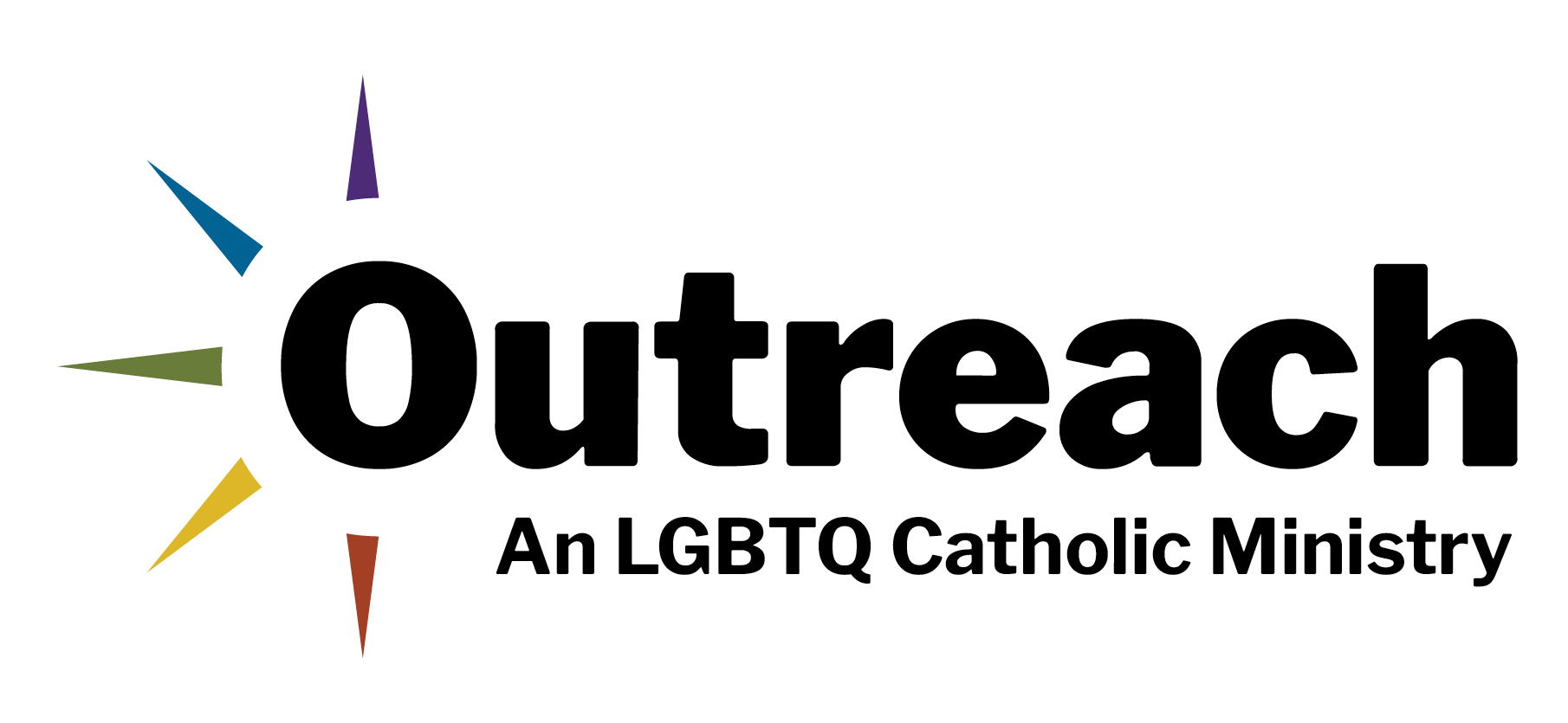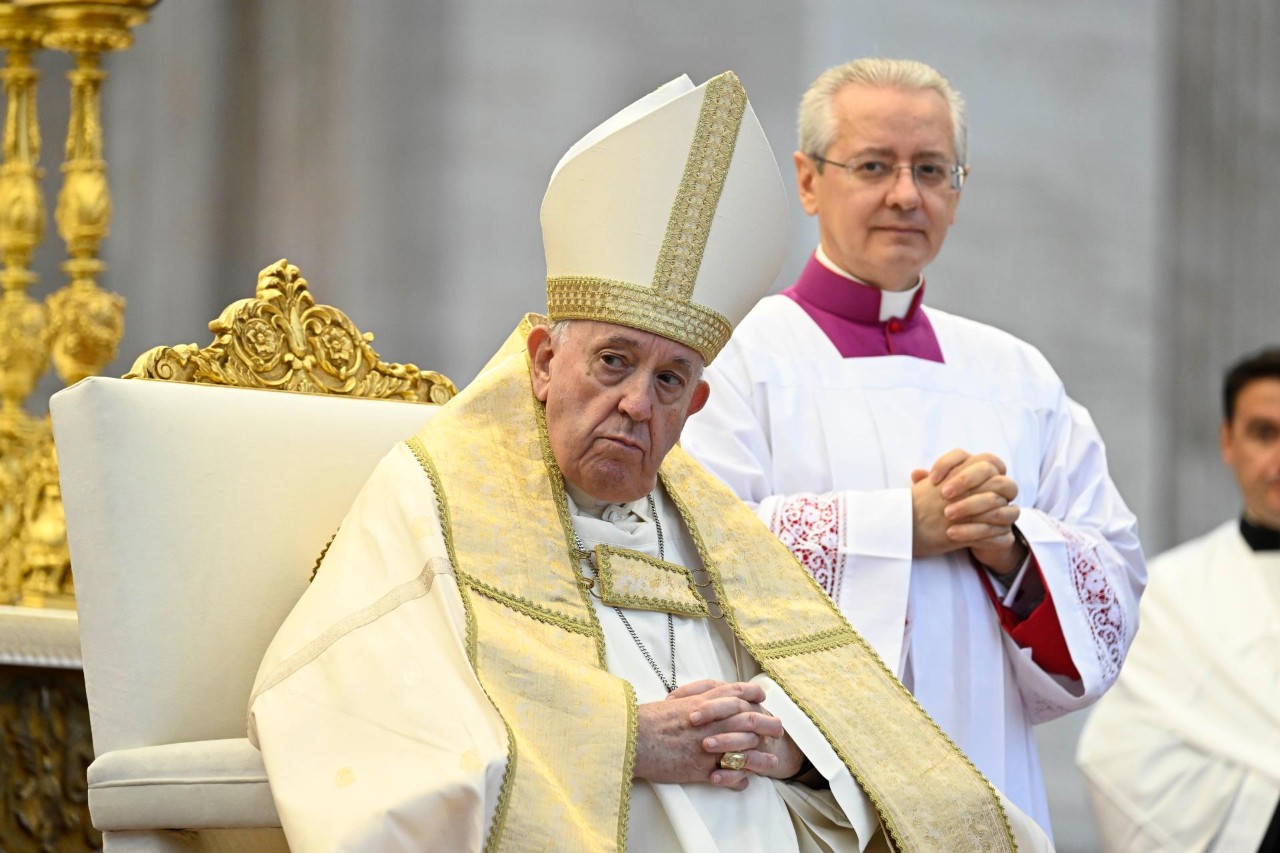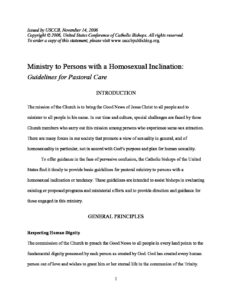Over the past year, the Catholic Church has embarked on what has been commonly referred to as a “synod on synodality,” a multiyear process designed to foster communal discernment and a sense of “journeying together” among the faithful.
Pope Francis sees synodality as essential to the life of the church. As he described in a May 5, 2022, address on the World Day of Prayer for Vocations: “The church must become increasingly synodal: capable of walking together, united in harmonious diversity, where everyone can actively participate and where everyone has something to contribute.” He has also described synodality as “the path which God expects of the church in the third millennium.”
A Primer on the Synod
Francis has described the synodal process as unfolding in three steps: encounter, listening and discernment. To that end, the pope sought the input of Catholics from around the world, and the Synod’s preparatory documents indicate a special desire to play close attention to those on the margins.
To achieve these goals, the Synod was to take place in a series of stages. In the first stage, from its beginning in 2021 through the summer of 2022, individual dioceses were to seek input from Catholics through listening sessions, online forms and other means of soliciting feedback.
Each diocese would then send syntheses of what they heard from the faithful to their country’s episcopal conference, who would use these syntheses to compile their own conference’s takeaways from the synodal process. After that, the consultation will move towards a continental level, ultimately culminating in a worldwide consultation during the Synod of Bishops in October 2023.
In the United States, individual dioceses—as well as any other organizations hoping to offer synodal materials—were to have their reports submitted to the United States Conference of Catholic Bishops by June 30. The U.S.C.C.B. has reported that 95 percent of dioceses have filed reports, but not all of these are public. As of August 3, some 70 to 80 dioceses have published their syntheses online. Many others, including the largest U.S. dioceses like Los Angeles, Chicago and Boston, have evidently decided not to do so.
The Synod and the LGBTQ Community
In the spirit of synodality, some US dioceses—including Buffalo, Washington and Salt Lake City—held special listening sessions specifically for LGBTQ Catholics. Beyond that, LGBTQ ministry groups like New Ways Ministry offered their own reports focused specifically on the LGBTQ Catholic experience.
This targeted outreach was not limited to LGBTQ Catholics—diocesan syntheses have reported special listening sessions for a variety of other underrepresented groups in the church, including young adults, Catholics in prison, the formerly incarcerated, minority language communities, former Catholics and the homeless.
Even where synodal processes did not include specific consultation with the LGBTQ community, relevant issues appeared continually throughout the diocesan documents. Out of at least 75 published syntheses, at least 63 (or 84 percent) made reference to the LGBTQ community and associated issues in the church. Some even used whole sections of their 10-page reports to expound upon their findings.
Those reports revealed a wide variety of attitudes towards the church’s relationship with the LGBTQ community. Some called for a clearer articulation of church teaching on sexuality and marriage, while large numbers of others called for more understanding and dialogue with LGBTQ Catholics, whom they saw as excluded from the church. Regardless, some consistent themes have emerged from the U.S. synodal process, given what we know so far.
Marginalization and Stigmatization
The vast majority of reports that referenced LGBTQ people mentioned that synod participants were concerned about their exclusion from the life of the church. Some, like the Archdiocese of Seattle, described the marginalization of LGBTQ Catholics as a “frequent theme of synodal conversations.”
“Out of at least 75 published syntheses, at least 63 (or 84 percent) made reference to the LGBTQ community and associated issues in the church.”
The diocese quoted one mother, who said, “My daughter is gay. I have no idea where that came from, but I realized: God loves everybody. I don’t see the Church being open to embrace gay people. That hurts.” In the Archdiocese of Louisville, Ky., another parent of a gay child expressed the same sentiment: “I’m a proud parent of [the] angel that God gave me,” the parent said. “She happens to be gay. She is the most loving and caring person I know. But it hurts me that she is not welcome in our Catholic Church.”
Young people in particular voiced concern about this exclusion. The Diocese of Erie, Pa., for instance, noted that “[c]ollege students said that the equitable treatment of persons who identify as LGBTQ+ and of people of color was one of their biggest concerns and one of the main reasons for them to leave the Catholic Church.”
The Seattle report quoted a fifth-grade boy, who said, “‘If we’re all children of God, how are we not equally accepted?’ Another student [from Seattle] said, ‘If God says he loves everyone and he doesn’t lie, doesn’t he also love trans people?’”
This theme of exclusion came up among LGBTQ Catholics themselves, too. The Diocese of Syracuse, in its report, described their listening session for LGBTQ Catholics. “Several gay people spoke of their experience of being considered ‘possessed’ or ‘mentally ill,’” the report explained. “Their stories were heartbreaking.”
These themes played the majority role in many synodal discussions about LGBTQ people. To contextualize this fact, for instance, the Diocese of Davenport, Iowa, made note that “[n]inety-four percent of over 300 comments related to LGBTQ+ persons were ‘broken heart’ comments.”
Language
The reports provided many insights into the reasons why LGBTQ Catholics feel isolated or cast aside from the church. The language used to describe LGBTQ Catholics came up frequently, and multiple diocesan reports pointed to the text of the Catechism of the Catholic Church, which refers to “homosexual acts” as “intrinsically disordered.”
The report from the Diocese of Little Rock explains the issue this way: “The language used by the Catechism is off-putting.” It further explains: “To read that these desires are ‘disordered’ causes a person experiencing these feelings/attractions as well as their family members to believe that the Church [sic] teaches that they are persona non grata. This is not the language of love.”
“I am not intrinsically disordered,” said one participant in Buffalo’s synodal process.
Participants were also upset by the language used to refer to LGBTQ people more generally. The Diocese of Metuchen, N.J., explained as much in their report: “Numerous participants pointed to “outdated” and “offensive” language used by the Church [sic] to refer to those who identify as LGBTQ, such as “[people with] same-sex attraction” and “disordered.” They describe this as hurtful and exclusionary and the use of these terms hinders people from speaking up candidly.”
Notably, the diocesan reports themselves used a wide variety of terms for members of the LGBTQ community, some of which are implicated in the frustrations highlighted by the Diocese of Metuchen’s synthesis. For gay, lesbian, bisexual and transgender people, for instance, the reports largely used either the term “LGBTQ” (including variants thereof), “people with same-sex attraction,” or less commonly, “homosexuals.”
For transgender people, some reports used the term “trans” or “transgender,” while others used the term “those with gender dysphoria,” or in one case, “those who deem themselves transgender.”
Catholic schools and institutions
Other participants felt as though Catholic schools and other institutions both excluded and discriminated against LGBTQ people. One participant, a transgender student at a Catholic high school in the Diocese of Phoenix, explained that they felt afraid to express their identity “for fear that [they] might be removed from the school.”
These worries extended beyond students and into the experiences of teachers and school employees, too. Sometimes, these experiences have even provoked backlash among the faithful.
“I am not intrinsically disordered,” said one participant in Buffalo’s synodal process.
In Seattle, the report mentions how students organized a protest following the controversial resignation of gay school teachers at a Catholic high school in 2020. One participant noted that the incident “was a painful moment, as hundreds of young people came and protested at the cathedral, moved by compassion and the love of Jesus. They were doing what we taught them, they were advocating for justice for the marginalized.”
Other reports, like the one from the Diocese of Louisville, noted the impact that perceived homophobia in the church had on the church’s charitable and community service efforts: “A Synod session held among Catholic Charities staff members noted, ‘LGBTQ clients are worried they will not receive services … Some don’t want to receive services because of our stance on LGBTQ [matters].’”
Family life
The church’s impact on the family life of those with LGBTQ relatives was also noted across different reports. The parents of LGBTQ children stood out in this regard, and in the Diocese of Rochester’s report, these parents “spoke of the pain of having to choose between the Church [sic] and the children they love.”
The Phoenix report used very similar wording, saying that “[m]any Catholics feel like they’re being forced to choose between their Catholic faith and those they love.” The same phrasing appeared for the third time in the Diocese of Erie synthesis: “Many people expressed that they have to choose between their church and their LGBTQ+ family members.”
Beyond that, many family members of LGBTQ Catholics felt ashamed of the church’s attitude towards the LGBTQ community, and had trouble expressing their faith with those relatives. According to the Diocese of Buffalo: “One woman said, ‘I feel angry that I have to apologize to my children for being Catholic.’”
Beyond that, some parents expressed worry that the teachings of the church were putting the mental health of their LGBTQ relatives at risk. One parent in Louisville summarized this perspective: “No one has ever apologized for making my son feel suicidal … I want my fellow Catholics to understand what the hateful rhetoric does to our sons and daughters. LGBTQ kids have a much higher rate of suicide compared to straight kids.”
According to the Trevor Project, a resource and mental health hotline for LGBTQ youth, reports that both religious and non-religious LGBTQ youth who hear negative religious messages about the LGBTQ community from their parents are almost twice as likely to attempt suicide.
Church teaching
Synod participants across the country also took note of church teaching on LGBTQ persons. They expressed different perspectives in this regard. As the Diocese of Charlotte put it: “The faithful are profoundly split about such matters.”
Some believe that the church needs to re-examine its teachings on same-sex unions, among other doctrinal reforms. As San Jose’s report described this group: “Many participants dream of a Catholic Church willing to re-think its beliefs and teachings about sexuality, especially regarding contraception, divorce, and LGBTQ+ issues.”
The views of these participants were well-represented across the country; Louisville’s report explained: “Inclusion of LGBTQ community in marriage came up at every session. This was consistent among older audiences as well as the younger, too.”
Others expressed a general sense of unease, confusion and disinterest in church teaching on LGBTQ issues, in a way that has impacted their other experiences with the church. Some diocesan reports saw this attitude particularly present in young people. One chaplain in the Phoenix area explained this phenomenon:
It seems that many of the students disagree with the Church’s views on sexuality enough to disinterest them from meaningful Church practice. This does not mean they want or expect the Church to change her teachings, however. Put simply, they find our teachings regarding human sexuality implausible and uninteresting.
Still, a third group expressed the view that although they affirmed church’s current stance on LGBTQ issues, this viewpoint was often expressed in uncharitable ways that drove away LGBTQ Catholics and prevented further dialogue.
Frequently, participants noted that church teaching calls on Catholics to accept LGBTQ persons with “respect, compassion and sensitivity.” They believed that the church was not emphasizing this perspective enough, and that it currently fails to embody its teachings on inclusion and non-discrimination.
Many reports, like the one out of Charlotte, felt that it was a matter for which future discernment would be necessary. “Are we truly embodying such stances?” the report asks. “Is it possible that we need to grow in our ability to follow what the Lord wants of us in this and other matters?”
At least one diocesan report, surprisingly, recommended that the church go further and consider changing its teaching on LGBTQ persons entirely. Buffalo stands out in this regard.
In the “Summary of Our Voices” section concluding its report, the Buffalo Diocese says that “[t]here is an unanimous call for our Universal Church to truly live our Gospel values and become a more welcoming and diverse Church. This will necessitate fundamental changes in the roles of clergy and women in leadership, its teachings on sexuality, particularly in ways that provide acceptance for LGBTQ+ persons.”
Joys, Hopes and the Path Forward
The experiences of LGBTQ Catholics at the Synod stretched far beyond feelings of exclusion or interaction with church teaching. Synod participants pointed in particular to the welcome they received from local Catholic communities.
In the Diocese of Albany, for instance, some participants pointed to a program at their church called Kieran’s Light. The Diocese notes: “According to the website, ‘It’s a ministry rooted in love, welcome, and respect for the LGBTQIA+ community, their family, friends, and loved ones.’ Many said that this ministry makes them feel accepted and provides a positive experience and a safe space.’”
It mentioned that the need for LGBTQ ministries and spaces in Catholic communities was one area where the church could discern further action.
“If the documentation we have so far is any indication, however, the process of synodal discernment has called the church to seriously reflect on its relationship with the LGBTQ community, and to find new paths forward in dialogue and reconciliation.”
In their own report soliciting feedback from LGBTQ Catholics, New Ways Ministry expanded upon the joyful experiences that some of these Catholics experience with the church on a local level. For some, this also took the form of LGBTQ spaces and ministries. “Being involved with LGBT ministry within the parish has led to a feeling of inclusion, belonging, and community,” one participant said. Others that New Ways Ministry talked to pointed to individual experiences of welcome, supportive pastors and the sacramental life of the church.
Beyond that, New Ways Ministry noted that many LGBTQ participants in synod consultations expressed hope for the future of the institutional church. Its report explained that “[t]hese positive feelings were felt especially now due to the synodal process and leadership of Pope Francis. There were frequent references to the Second Vatican Council as a source of hope and inspiration, too.”
The report also mentions a group of synod participants who wrote what it called a “manifesto,” expressing their hope for “a church where all truly are welcome,” “a church that celebrates and rejoices in differences” and “a church that reaches out to the margins until there are no more margins.”
The New Ways Ministry report was not the only document where Catholics expressed their dreams for a more inclusive church through the Synod process. The Phoenix report provided another example. It spoke of a student at a Catholic high school who wrote a prayer that his school used to start its consultations: “We’re hopeful the excluded will find a home and safe haven, and that our minds will open more, and we’ll put ourselves in others’ shoes, and accept them without judgment, regardless of race, sexuality, [or] gender.”
Diocesan syntheses provide a wide variety of paths forward, in this respect. Some mentioned the need for more LGBTQ outreach, others mentioned the need for tonal and linguistic shifts and some even recommended actions that the universal church could take to clarify its hope for LGBTQ inclusion.
Most of the ideas, though, boiled down to one central concept—that the church needed to take more steps towards making the LGBTQ community feel less alienated from their life in the church. One response, from the Diocese of Fairbanks, Alaska, even suggested that the church announce a “year of welcoming” much like Pope Francis’ Jubilee of Mercy in 2015. The Fairbanks report further emphasizes the image of the church as a “sanctuary” for marginalized populations.
We will have to wait until the U.S. bishops publish their synodal synthesis to learn about what the other diocesan synods discovered, and similarly, we will have to wait until the Synod moves forward to see the next steps for the church’s relationship with LGBTQ people.
If the documentation we have so far is any indication, however, the process of synodal discernment has called the church to seriously reflect on its relationship with the LGBTQ community, and to find new paths forward in dialogue and reconciliation.




